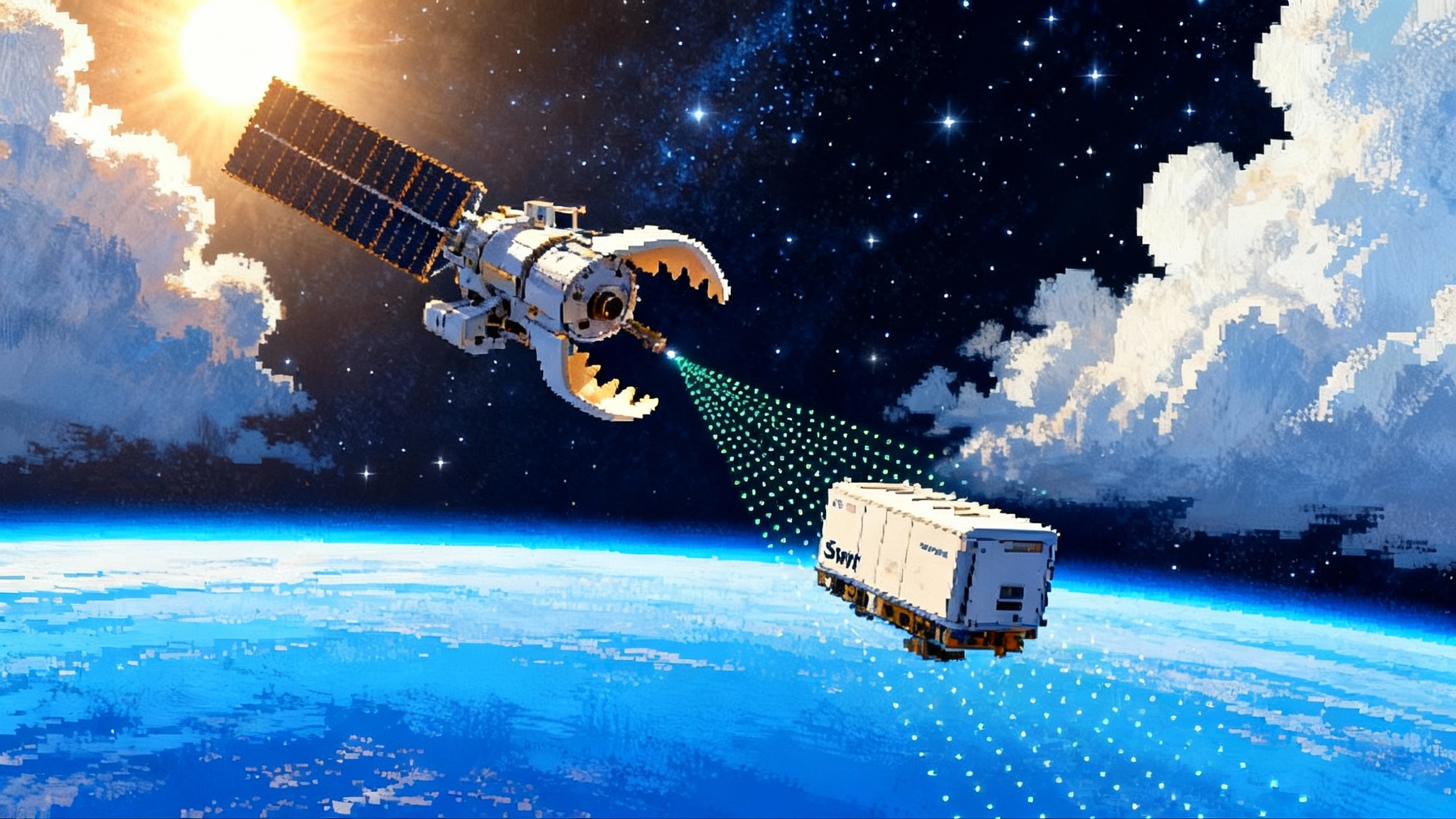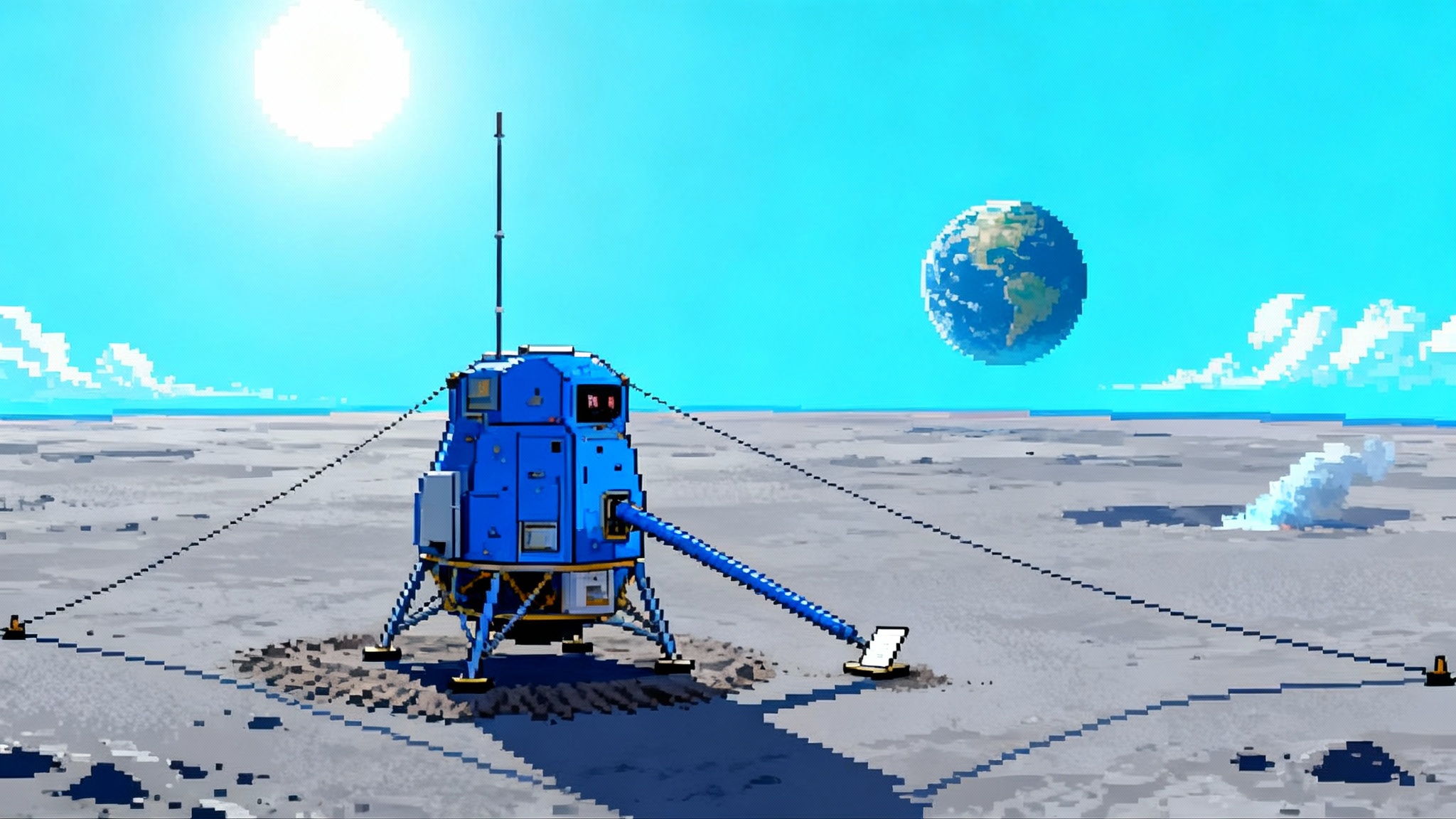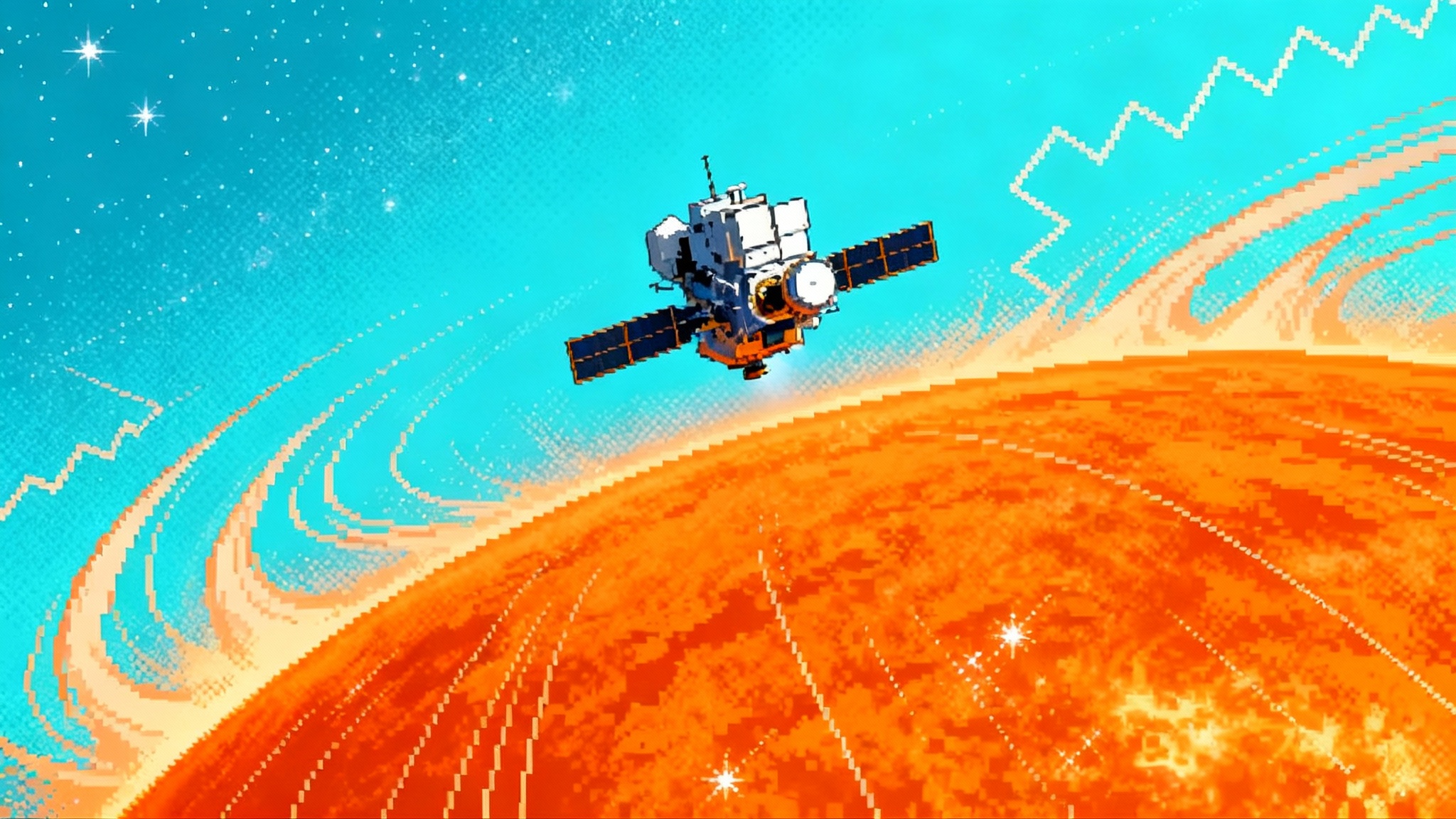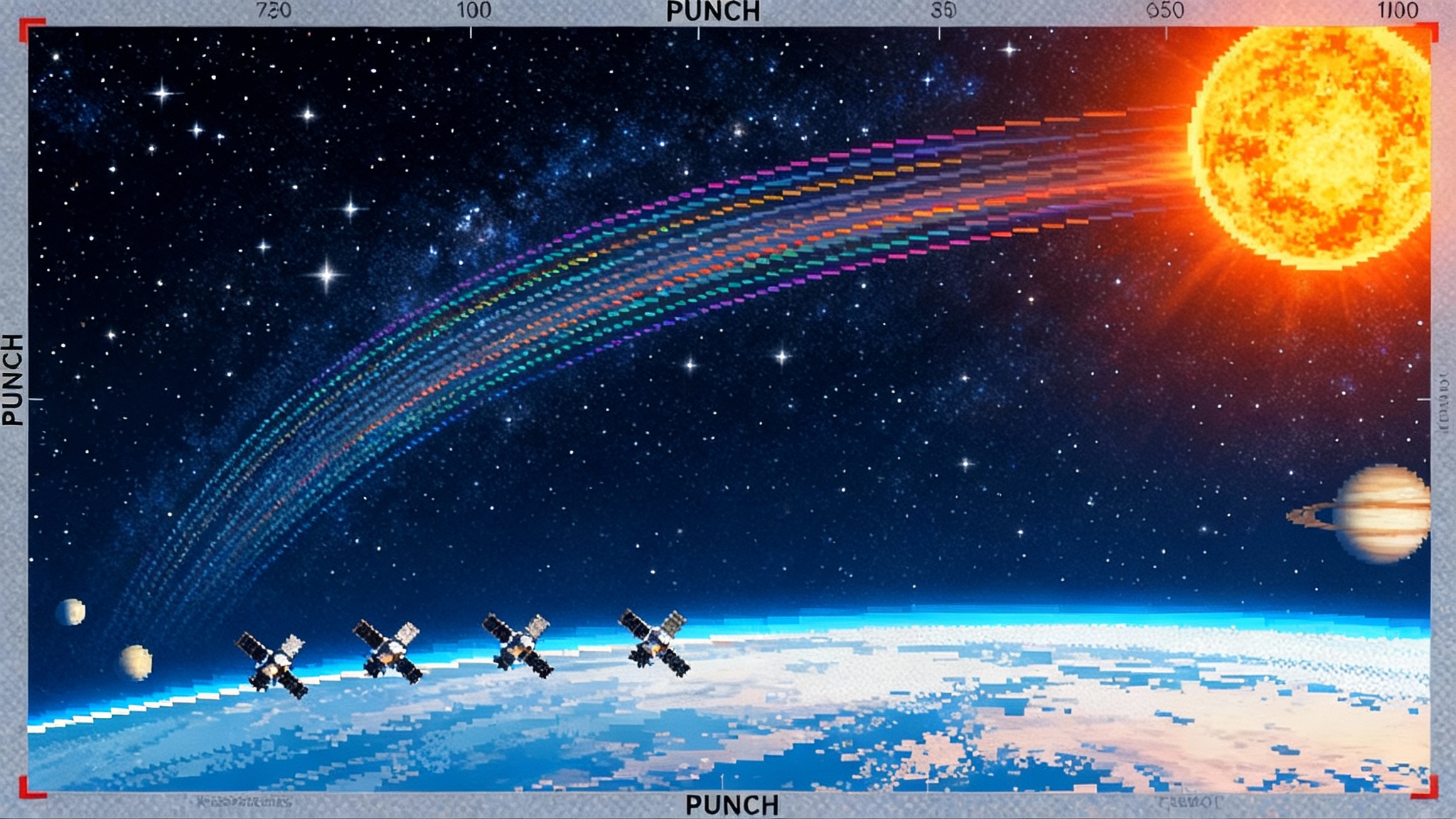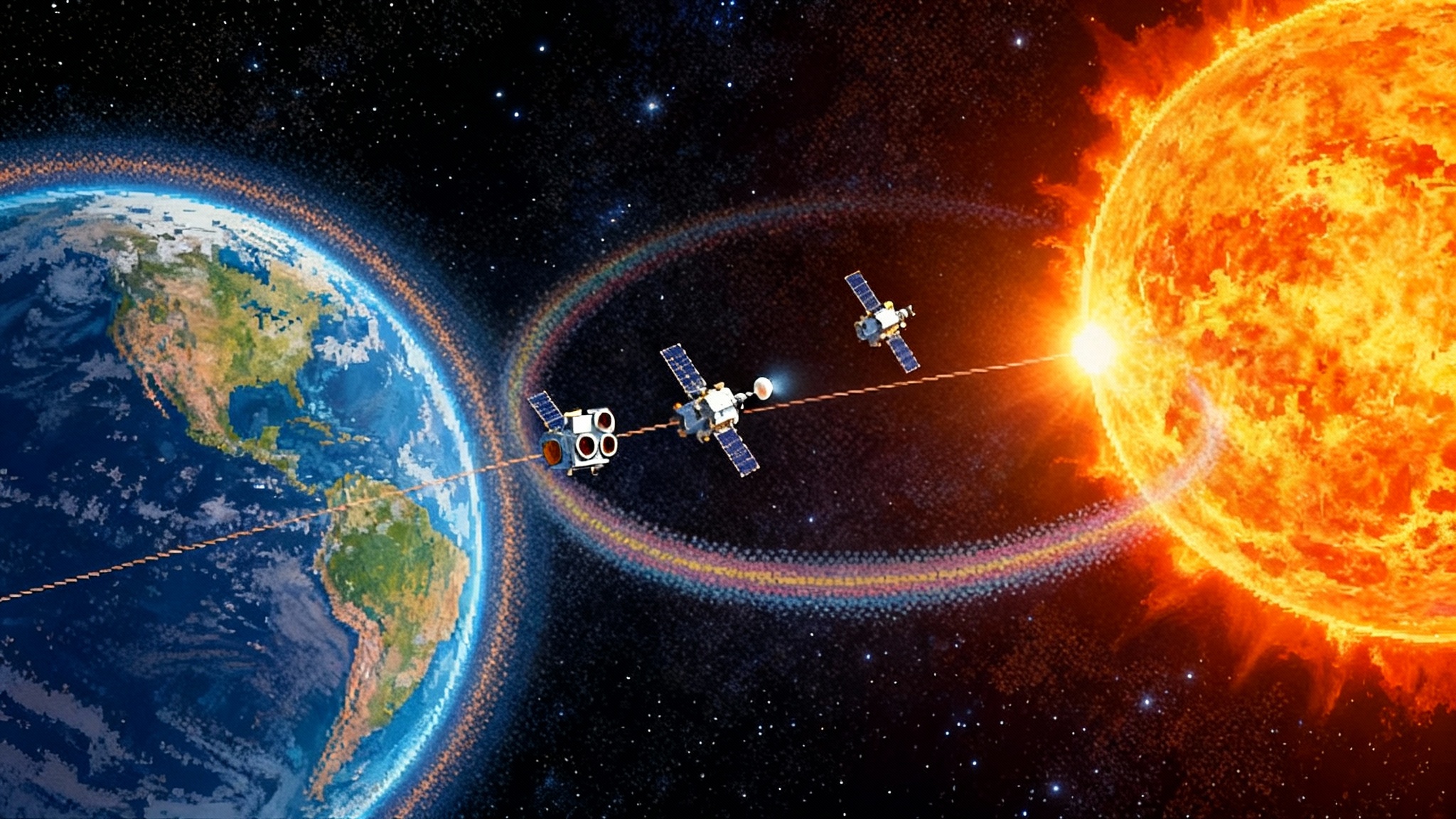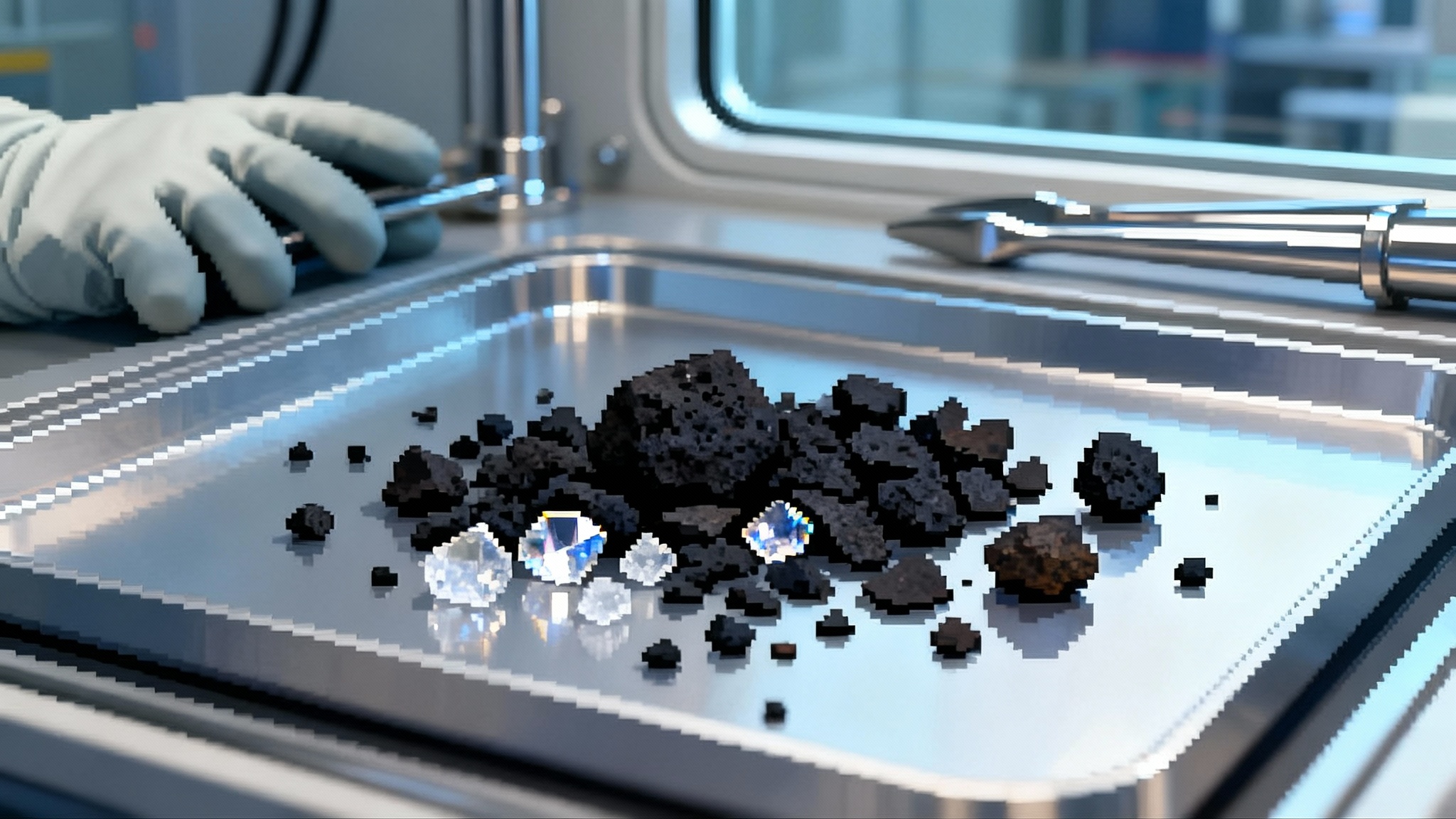Chang’e‑6 reshapes lunar water, landings, and ISRU strategy
Peer-reviewed Chang'e-6 samples point to an ultra-dry farside mantle and a complex magnetic-volcanic past. Here is how that asymmetry reshapes water expectations, landing site strategy, and early ISRU.
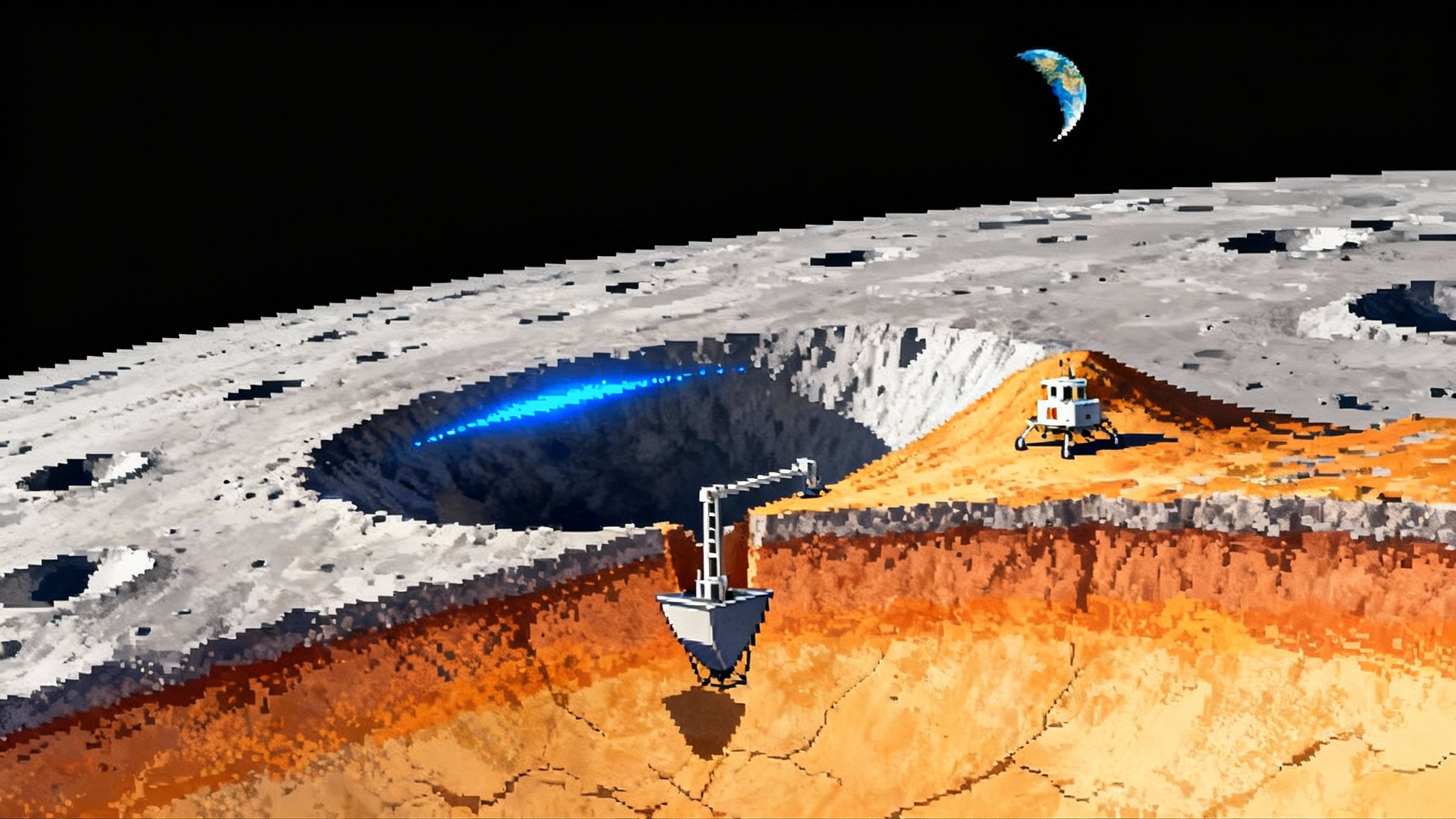
The finding that changes the map
In April 2025 a Nature paper revealed a striking result from China’s Chang'e-6 samples: the mantle source beneath the farside South Pole-Aitken basin contains only about 1 to 1.5 micrograms of water per gram. The parent magmas that fed those basalts carried 15 to 168 micrograms per gram. That is the first direct mantle water estimate from the farside, and it points to a hemispheric dichotomy in the Moon’s deep volatiles. The near side’s mantle can be far wetter in places, but the farside below South Pole-Aitken looks extremely lean. See the open-access study, Water abundance in the lunar farside mantle.
Seen against decades of orbital hints about near-far contrasts in heat-producing elements and crustal thickness, the Chang'e-6 numbers feel like a missing puzzle piece. If the farside mantle is genuinely drier, that helps explain why the near side hosted more long-lived mare volcanism. It also means that at least some of the water and other volatiles we hope to use in future missions may be concentrated in polar cold traps and surface reservoirs, not delivered from below by deep magmas.
Asymmetry, water, and what it really means
The practical question is not academic. Artemis planners, China’s International Lunar Research Station team, and commercial lander providers are all counting on local water to reduce logistics and to anchor a permanent polar presence. Chang'e-6 does not weaken the case for polar ice. Instead it reframes the risk. If the farside mantle is ultra dry relative to typical near-side mantle sources, then local ice in permanently shadowed regions becomes even more central to early mission success. Where the interior is stingy, the surface must do the heavy lifting.
There is a second twist. Chang'e-6 results add to evidence that the Moon’s interiors evolved differently in the two hemispheres, which likely affected heat flow, crustal composition, and the timing of volcanism. That means the fidelity of any model that extrapolates from one hemisphere to the other is now suspect. Site planners should assume high spatial variability in polar volatiles and design for rapid in-situ assessment, short-range mobility, and the option to retarget within a local network of ridges and small cold traps rather than betting on a single crater. For context on how commercial deliveries are adapting mission design, see our CLPS turning point analysis.
The magnetic and volcanic curveballs
Chang'e-6 also brought the first paleomagnetic constraints from the farside. In late 2024 a Nature study reported paleointensities of roughly 5 to 21 microteslas recorded by 2.8 billion year old farside basalts. The field appears to have rebounded after a sharp decline near 3.1 billion years ago, which argues for a lunar dynamo that waxed and waned rather than a simple monotonic fade. Read the open-access article, A reinforced lunar dynamo recorded by Chang'e-6 farside basalt.
Couple that with analyses that date farside volcanism to at least 4.2 billion years ago and as late as 2.8 billion years ago, and the farside reads as both thermally and magnetically complicated. A long tail of volcanism and a pulsating dynamo would have reshaped crustal magnetization patterns and perhaps volatile retention in ways we are only starting to resolve. For mission planning this matters because crustal magnetization affects near-surface plasma and dust behavior, and it can influence instruments that rely on magnetometers as navigation or context sensors.
Landing site selection gets sharper
- Favor mosaics over bullseyes. Pick regions, not points. Target sunlit ridges that border multiple small permanently shadowed craters. That lets crews or robots pivot among micro-sites if ground truth shows patchy ice.
- Elevate early prospecting. Make room for drills that reach tens of centimeters to meters, neutron and gamma spectrometers, evolved-gas analyzers, and down-hole temperature sensors. Fast coring plus immediate volatile assay should be day-one operations for both crewed sorties and robotic scouts.
- Keep magnetic context in view. Local anomalies can perturb charged dust and affect communications and instrument baselines. Fold in orbital magnetics and plan short field calibrations for sensors that are sensitive to ambient fields.
On the Artemis side, NASA’s recent portfolio already reflects this pivot. The PRIME-1 drill and mass spectrometer demonstration flew in 2025 and returned useful data despite a hard landing, showing that polar drilling and evolved-gas measurements can operate in the real environment. VIPER’s plan has been re-scoped, with new delivery options under discussion; see our VIPER returns update for how that could reshape polar operations.
For ILRS, the Chang'e-6 findings reinforce the logic of building at the south pole and investing early in prospecting and access to shadowed terrains. Partners are studying robust surface power architectures, including large solar arrays and possible nuclear options, to buffer the risk that ice is patchier or harder to extract than hoped.
ISRU planning in a world of dry interiors
- Plan for exogenic water. Treat ice as the primary water feedstock and the mantle as a minor or zero contributor in the south polar environment. Design plumbing so that any endogenic water encountered is a bonus, not a requirement.
- Start with oxygen first. Mature oxygen-from-regolith pathways in parallel with water extraction. Molten regolith electrolysis, carbothermal reduction, and hydrogen reduction of ilmenite do not depend on bulk water and can be sized for pilot scale within early missions.
- Mine ice gently. If ice is cemented within regolith, thermal mining and vapor capture reduce mechanical disturbance, lower dust, and may minimize isotopic fractionation. Include reusable capture blankets, vapor hoods, and cold traps that can be repositioned as the resource map evolves.
- Build for patchiness. Tanks, purification skids, and cryogenic storage should be modular, moveable, and tolerant of intermittent production. Plan for ice grades that range from clean lenses to dirty pore ice.
- Watch the magnetized ground. Where crustal magnetization is strong, expect subtle changes in plasma charging and dust lofting. Shield sensitive valves, and check for electromagnetic compatibility in situ before long production runs.
What we still do not know
- Representativeness. Are the Chang'e-6 basalts and soil clasts typical of the farside mantle at large, or are they a special product of South Pole-Aitken’s deep excavation and melt history? Only more farside sampling will tell.
- Vertical variation. Does mantle dryness hold with depth below the sampling zone, and how does it vary laterally across the farside? The answer will shape thermal models and expectations for deep degassing over time.
- Ice architecture. How thick are polar ice bodies, what are the grain sizes, and how do impurities vary with depth and slope orientation? That controls mining method, power, and filtration design.
- Dynamo drivers. Was the 2.8 billion year rebound global or regional, and what powered it, core crystallization, a basal magma ocean, precession, or some blend? The answer will feed back into models of crustal magnetization and thermal evolution.
- Farside volcanism timeline. How widespread were the late eruptions, and did they interact with polar volatile traps through heat or gas release? Better age control on more clasts would help.
The measurements to watch next
- Chang'e-7 south pole investigations. CE-7 includes an orbiter, lander, rover, and a hopping probe intended to traverse sunlit rims and then hop into shadow to directly sniff water molecules. Its analyzers and shadow access could finally map micro-scale volatile distribution and temperatures the way planners need.
- CLPS and PRIME-1 follow-ons. Continued analysis of the 2025 PRIME-1 drill and mass spectrometer data, plus follow-on deliveries, will give the first real vertical volatile profiles and operational margins for thermal and mechanical excavation. For how CLPS is evolving, revisit our CLPS turning point analysis.
- Europa Clipper style instrument synergy on the Moon. Combine mass spectrometers, magnetometers, plasma instruments, and thermal imagers. On the Moon, that means coupling evolved-gas experiments with neutron, gamma, and ground-penetrating radar, then adding local magnetic context to understand dust and surface charging.
- Better radar and gravimetry. High frequency and low frequency radar from orbit and the surface can distinguish clean ice lenses from ice-rich regolith. New gravimetry and laser altimetry at the meter scale could resolve buried sills and intrusive bodies that focus heat flow, a variable that matters for past volatile stability.
- Magnetic mapping at polar scales. Fill the gap between global anomaly maps and in situ paleomagnetism. Small rovers with vector magnetometers can walk circuits that deconvolve crustal contributions from environmental noise, giving mission teams better forecasts for dust behavior and communications reliability.
How strategies could shift over the next 2 to 3 years
- Scout first, scale later. Make 2025 to 2027 a reconnaissance window. Prioritize short-hop or micro-hopper missions into permanently shadowed regions that return volatile depth profiles, temperatures, and grain size estimates. Use those maps to rank mining targets.
- Flexible landing commits. Treat landing sites as hubs, not final addresses. Architect landers with range to reach two to three candidate permanently shadowed regions from a single sunlit ridge. Carry contingency kits for drilling in both fluffy regolith and ice-cemented ground.
- Parallel ISRU paths. Run water extraction and oxygen-from-regolith pilots in parallel. If local ice proves thin or contaminated, oxygen production still returns value. Conversely, if ice is abundant and clean, oxygen becomes a byproduct of water electrolysis.
- Power that survives uncertainty. Invest early in surface power that smooths through long nights and shadow work. ILRS and Artemis providers should study solar-nuclear hybrids so that extraction does not fail when sunlight or temperatures push hardware to the margin.
- Harden instruments against dust and fields. Expect dust adhesion and variable surface charging near magnetic anomalies. Budget mass for covers, purge capability, and calibration routines.
- Data fusion across programs. Share Chang'e-7, CLPS, and LRO updates into common polar maps. Harmonize formats and uncertainties so site planners can compare apples to apples. For a broader look at how agencies pivot architectures under pressure, see our sample return reset analysis.
The bottom line
Chang'e-6’s samples do not end the search for lunar water. They sharpen it. An ultra-dry farside mantle and evidence for a restless magnetic history say that the Moon kept its secrets in different places on different timescales. The next smart move is not to assume uniformity. It is to scout, to design for patchiness, and to carry instruments that can decide quickly whether a crater is worth mining or a ridge is worth a base.
